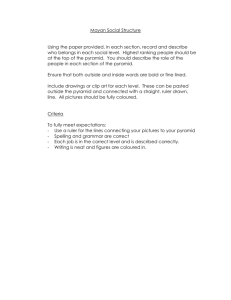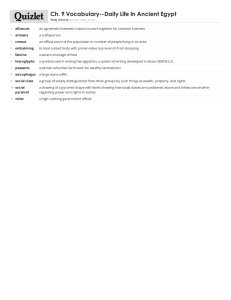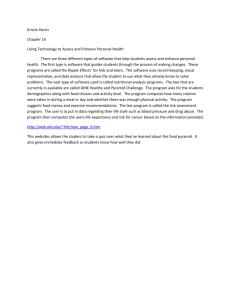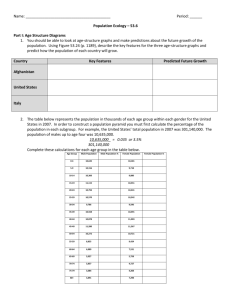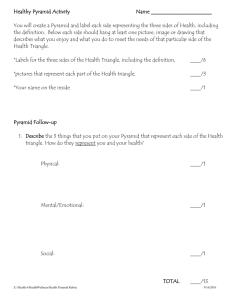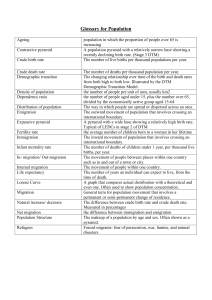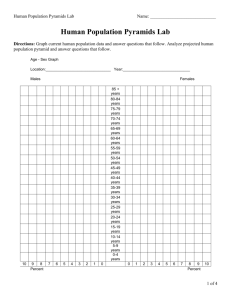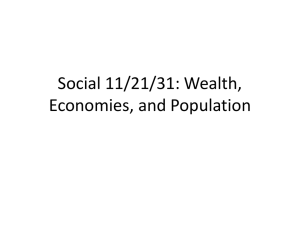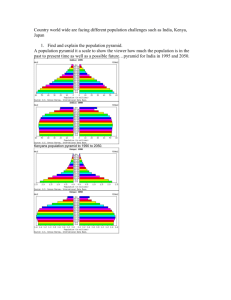Population Age Structure - AP Environmental Science
advertisement
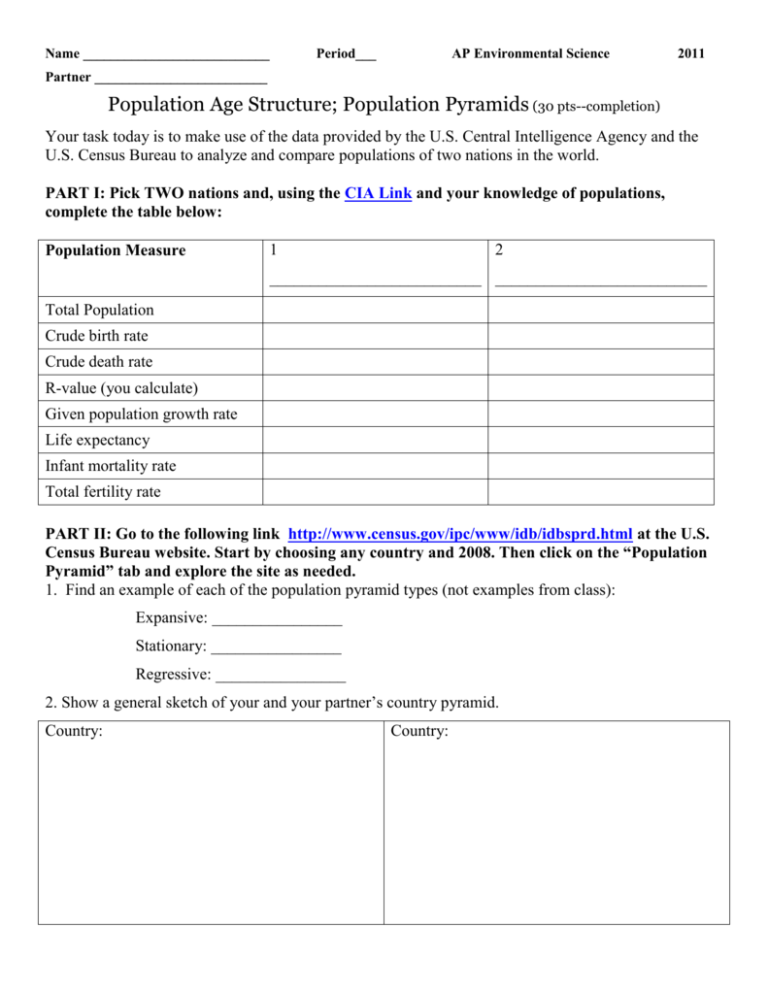
Name ___________________________ Period___ AP Environmental Science 2011 Partner _________________________ Population Age Structure; Population Pyramids (30 pts--completion) Your task today is to make use of the data provided by the U.S. Central Intelligence Agency and the U.S. Census Bureau to analyze and compare populations of two nations in the world. PART I: Pick TWO nations and, using the CIA Link and your knowledge of populations, complete the table below: Population Measure 1 2 __________________________ __________________________ Total Population Crude birth rate Crude death rate R-value (you calculate) Given population growth rate Life expectancy Infant mortality rate Total fertility rate PART II: Go to the following link http://www.census.gov/ipc/www/idb/idbsprd.html at the U.S. Census Bureau website. Start by choosing any country and 2008. Then click on the “Population Pyramid” tab and explore the site as needed. 1. Find an example of each of the population pyramid types (not examples from class): Expansive: ________________ Stationary: ________________ Regressive: ________________ 2. Show a general sketch of your and your partner’s country pyramid. Country: Country: Questions- ANSWER for your nation:_________________________ PLEASE answer these questions here and/or on a separate sheet of paper. (1 pt each) 1. Which gender has the higher population in the youngest age groups on your pyramid? Explain why this might be. 2. Which gender has the higher population in the oldest age group? Explain reasons specific to your country if possible. 3. What shape does your country’s histogram look like? What does this mean for your country? 4. If the birth and death rates remain the same, generally what will your pyramid look like in 25 years? 5. Determine the percentage of the population that has yet to reach childbearing age (females below 14). 6. Determine the percentage of the population that is at post-reproductive age (females 50+). 7. Determine the percentage of the population that is 65+. 8. What do these numbers say about the prospects for future growth? 9. What are some social/economic problems that might occur as a result of your population’s age structure? 10. Does your country have a baby boom in it? How can you tell?? 11. If you had a business and you wanted to capitalize (make $$) on your information about the population age structure, what would you sell? Why? 12. Briefly discuss whether your countries are increasing in population size, decreasing, or close to ZPG. 13. In one paragraph, compare and contrast you and your partner’s nations. In what ways are their population’s age structures similar? How are they different? EXPLAIN why this might be. (5 pts)

